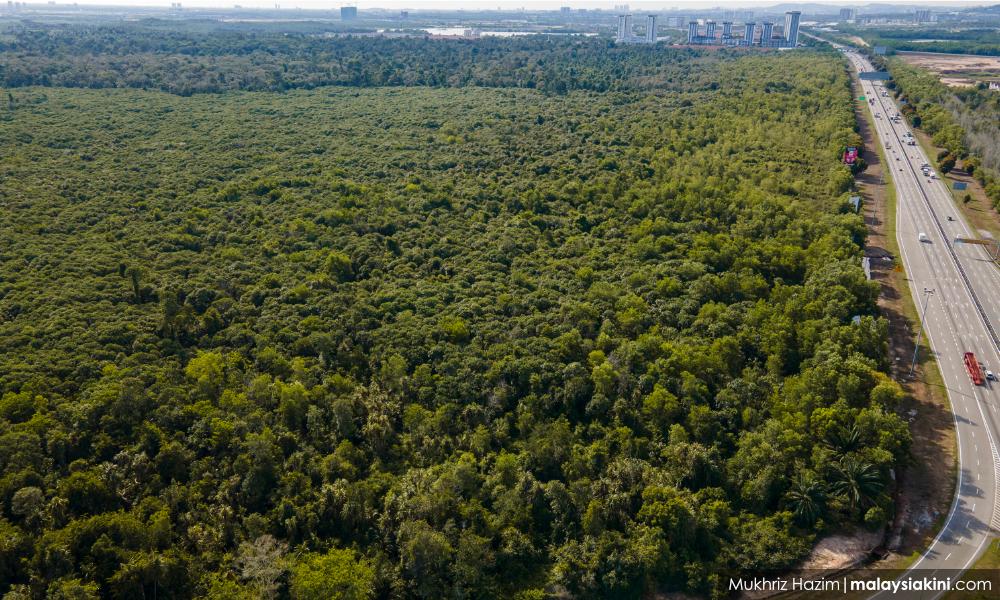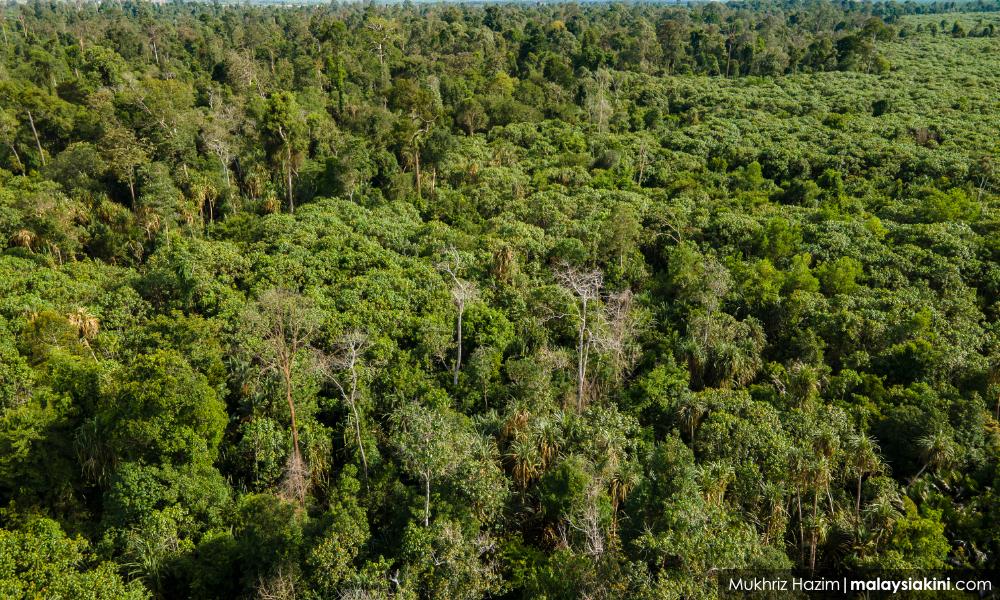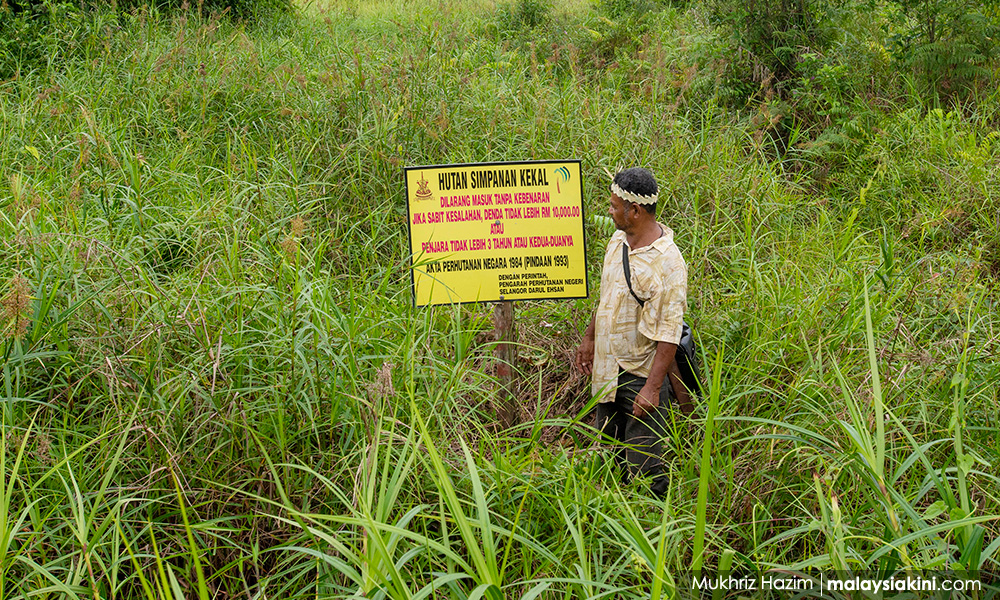On Aug 30, the Selangor Executive Council (Selangor exco) announced that the government has de-gazetted half of the Kuala Langat North Forest Reserve (KLNFR). This shocked not only the public who were vehemently against this proposal, but its own majority State Assembly and the governing party coalition Pakatan Harapan.
The decision was made in May when the nation was on prolonged Covid-19 lockdown, but only revealed when queried at the State Assembly. Equally baffling was the reasons given which defy science, logic, and due legal and administrative processes.
First to put into context, let me delve deeper into the KLNFR, an intact peat swamp forest in a fast-developing urban centre.
As the environment chief in the Asean Secretariat from 2000-2014, I was responsible, among others, for planning and implementing peatland forest rehabilitation and conservation, synergising experiences and cross-learning among the 10 Asean member countries.
We put in place the Asean Peatland Management Strategy 2006-2020, and mobilised financing of US$17 million comprising grants and co-financing from the Global Environment Facility (GEF) and International Fund for Agriculture Development (IFAD) for a five-year project (2009-2014) on rehabilitation and sustainable management of peatland forests in Asean.
I was the project director, with technical and operations support by the Global Environment Centre, Malaysia. Based on the success of this project, I developed a more comprehensive programme called the Asean Programme on Sustainable Management of Peatland Ecosystems (ASMPE) which was adopted by the Asean environment ministers in 2014.

In Malaysia, we focused on the North Selangor Peat Swamp Forest, and I understand international funds were mobilised to rehabilitate the KLNFR. In fact, the Selangor state government, the forestry and environment departments, civil society, grassroots custodians such as the Orang Asli were partners in these endeavours. One can google using the keywords, Asean, GEF, IFAD, GEC, Peatlands, to review pages of literature and visuals on the work done under this programme.
The point I am making is, as we mobilised international, national and local efforts for peatland rehabilitation and conservation, the Selangor exco is destroying those very peatlands. What message are we sending, as we tout our leadership among developing countries as champions of environmental management, including our strong commitment to international climate change, biodiversity conventions and the 2030 sustainable development goals in particular?
Peatlands are not wasteland
Let me now address the reasons given by the Selangor exco for converting KLNFR into mixed development in layman terms, as they don’t seem to appreciate the scientific and environmental significance of peatlands.
Selangor exco Hee Loy Sian reportedly said the de-gazetted KLNFR is “empty, there are no tall trees, it is degraded by fire”. Even if Hee has not visited a peatland site, he should know the soft water-logged soil cannot support any tall trees, unlike dry land. It is degraded by fire because of neglect by the federal and state governments.
I can categorically state this because government agencies like the forestry department do not have much funds for rehabilitation work compared to enforcement. That is why Asean has to mobilise donor funding. Probably Hee can explain how much effort the state government has put in for rehabilitation. I guess now we can see the self-serving reason for neglect, as it became a convenient excuse for de-gazetting.
Peatlands are not wasteland or a useless infested swamp. Peatlands are a very unique ecosystem formed over thousands of years from decaying organic matter in water-logged areas. For a peatland to form, it needs a unique combination of topography to retain water, wet climate, and suitable biodiversity.
Peatlands are not like dry land where it can be destroyed, reshaped and re-populated with any type of flora or fauna. However, peatlands can be easily destroyed permanently, just by draining it at one corner. To rehabilitate it takes years of hard work by hand to plant and bring back the vegetation. But first, the leakage has to be plugged to flood the peatland again, which is a monumental task. No machinery, other than hand-held, can be used to carry out these tasks.

The Selangor exco says they will conserve an equal area of peatlands elsewhere, and apparently consultants have certified that such biodiversity of flora and fauna can be found there. Even a school kid will find this argument ridiculous. This is like saying, we will house all the humans in a concrete jungle and put the fauna and flora in zoos and botanical gardens respectively in a separate area. Nature is harmonious co-existence, not compartmentalised living. The Selangor exco should make public the report of that consultant, which I am sure no sane person would agree with.
Furthermore, peatlands can be up to 10 metres deep of soft soil and decaying organic matter. These are huge natural reservoirs regulating hydrology (water supply, storage, flood control, water recharge, natural cleansing and filtration), carbon sink and sequestration, moderating local climate and many other free environmental services.
Imagine if such an area is built up and cemented, the impact will be felt for miles beyond the subject area. We are already experiencing this in Kuala Lumpur where taxpayers have to pay for flood mitigation such as expensive tunnels, storage areas and river deepening.
Selangor is already facing problems of dry taps and foul water (even as I write!), toxic air and water pollution, landslides and subsidence, heat waves, traffic congestion, lack of green space, and yet we want to destroy a huge green lung. The economic and social costs shouldered by the taxpayers will be many times over several generations, compared to the one-time profit extracted by private interest from destruction of nature’s stock capital.
Overwhelming objections
The Selangor exco sounded generous, only excising half of the KLNRF, based on universal objections raised. Peatlands are akin to a sponge retaining water by natural topography. The state government is saying we will cut the water impregnated sponge in half, but expect the other half to retain its water and its properties.
The government claims it has accommodated the indigenous people as the remaining half is sufficient to maintain their livelihood and culture. Again, this is a condescending argument. The Orang Asli are part of the natural ecosystem and are guardians of nature, the best nature lovers we can get. They know how to sustainably live with nature; they are not scavengers, but help to conserve the natural ecosystem. Don’t cage them in a safari-like environment. Indeed, they are the most sought after in any rehabilitation and conservation efforts, and continue to do so long after such short-term interventions.

Now, let’s look at the legal and political processes of land-use change. The purpose of the public hearing is a statutory process to gather feedback and act accordingly. Not to just take note, and even worse to decide otherwise against the overwhelming objections which are sound and scientifically based. This can be subject to a challenge in court. The federal and state governments are privy to such opaque decision making, and we hope judicial activism will prevail on such judicial review cases.
In any democratic parliamentary system, the state assembly decision is supreme and cannot be ignored by the executive. Worse still to say it is just a guidance. This approval of the state government can be challenged as unconstitutional. In fact, the state assembly has the power to remove the state executive if it acts against the people’s interest, and against the assembly’s decision.
The Selangor exco says the decision was endorsed by the relevant federal and state agencies. My experience working on the Asean peatland project is otherwise, in fact they were partners in promoting conservation.
For such a large environmentally sensitive area, was an environmental impact assessment done before this decision was made? Such an assessment cannot be done on a project basis after de-gazetting, when development is carried out by various entities. The Environmental Quality Act does not allow areas to be manipulated so that it falls below the threshold requiring EIAs.
The Selangor exco says the development will be undertaken by a private shell company. This is the most telling giveaway. There are two distinct consecutive stages, i.e. de-gazettement and subsequently tendering to obtain the best terms. Was this done concurrently or was the whole decision-making process driven by the vested private interest?
As explained above, the reasons proffered seems to be pro-construction and anti-environment, and not environmentally sound sustainable development. The state government cannot hide behind alienating the land to a government-owned company and then washing its hands off. This is exactly the klepto-economics that BN practised which I wrote about.
In view of the public unhappiness and even from the state assemblypersons, the Selangor exco should be transparent and reveal the decision-making process. It should even invite MACC to undertake a preventive investigation/audit so that everything is above board. The reasons as given now cannot stand on their merit or the legal processes as explained above. - Mkini
RAMAN LETCHUMANAN, PhD, was director, Environment/Conservation, Ministry of Science, Technology and the Environment (1993-2000), Head, Environment/Haze/Disaster Management, Asean Secretariat, Jakarta (2000-2014), Senior Fellow, S Rajaratnam School of International Studies (RSIS), Nanyang Technological University, Singapore (2014-2016). Contact: raman.asean@gmail.com.



No comments:
Post a Comment
Note: Only a member of this blog may post a comment.